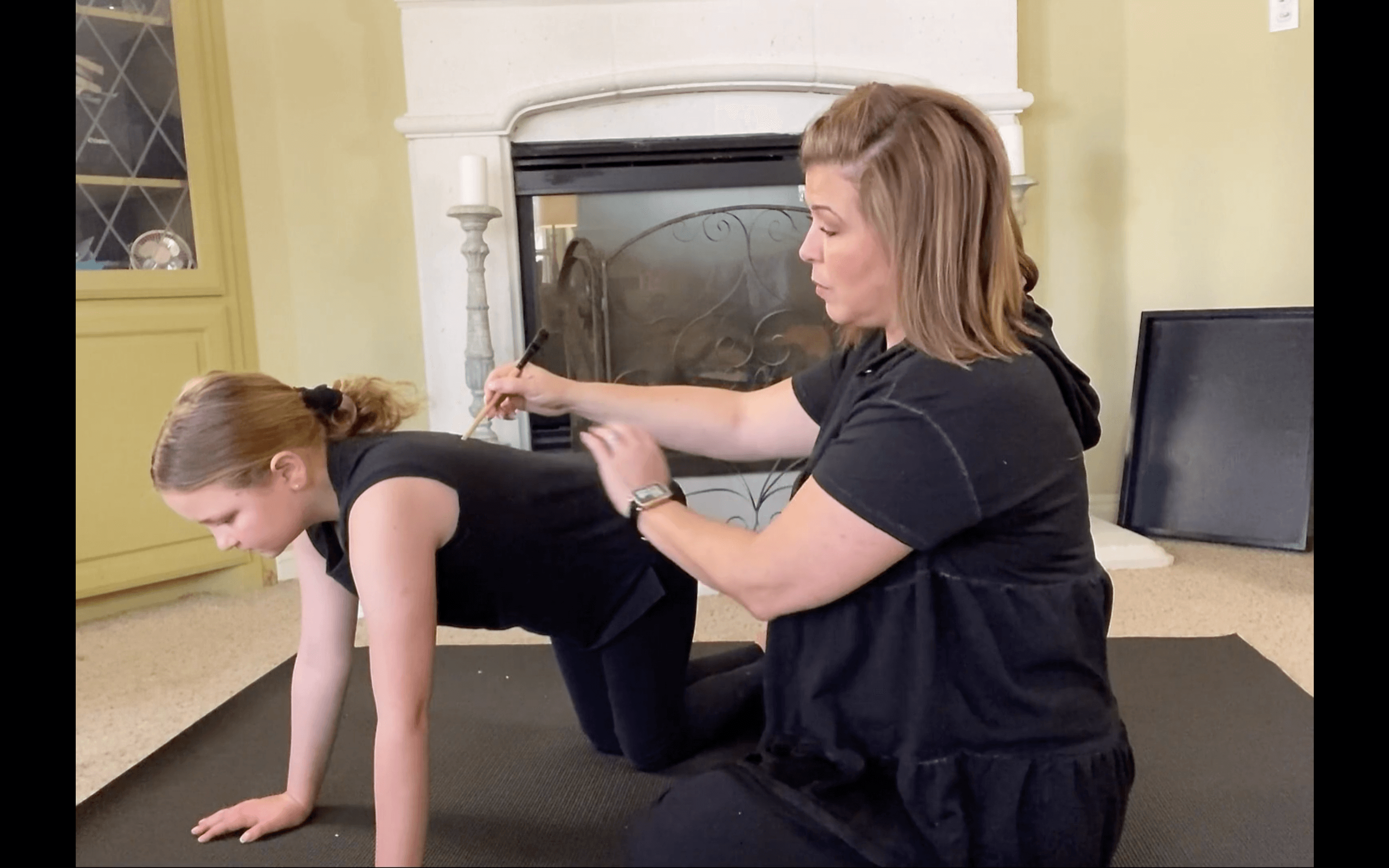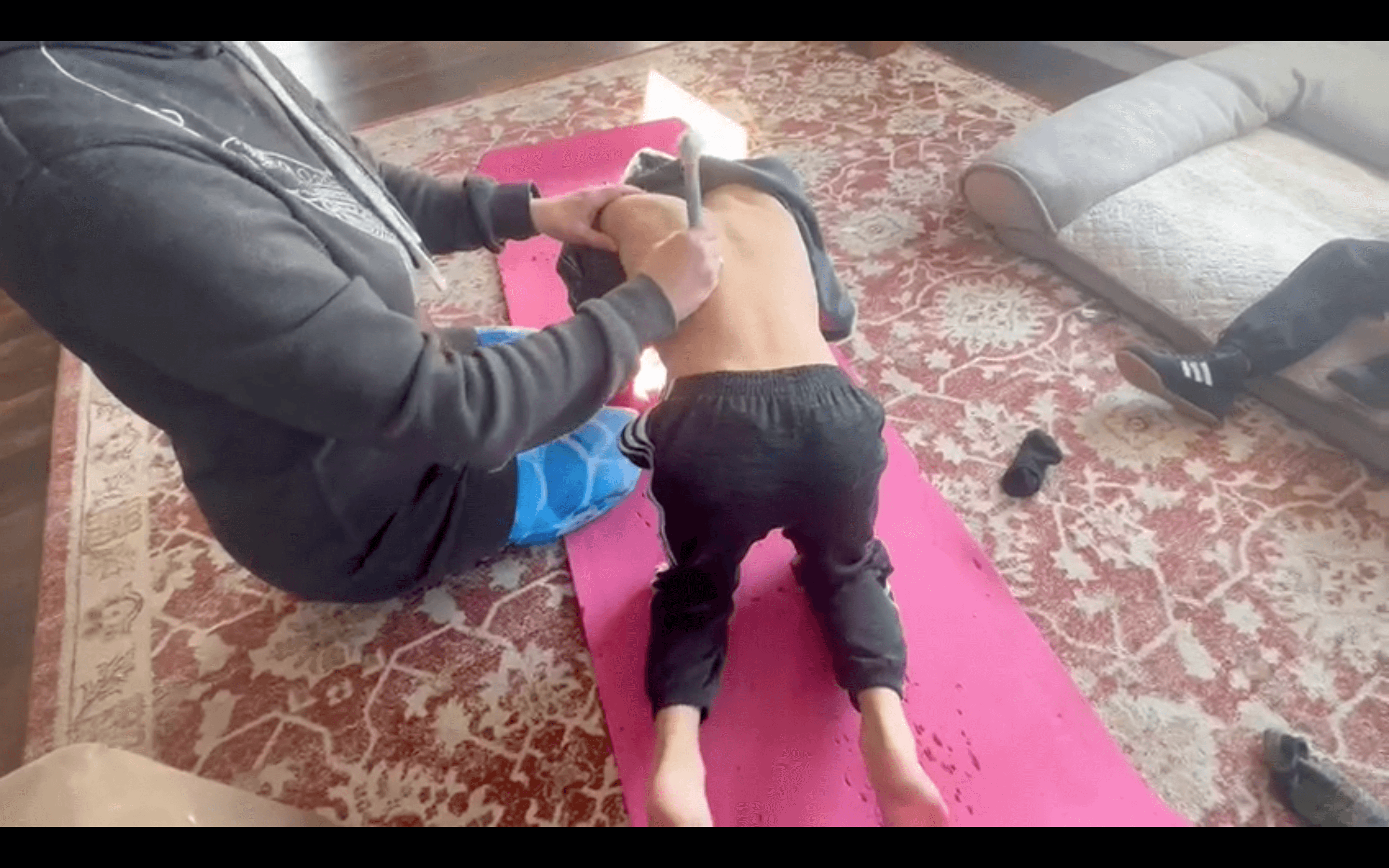Course Menu
-
Introduction
Course Outline
System Development
Understanding Fear Paralysis Reflex
Understanding Moro Reflex
Understanding Rooting Reflex
Understanding Babinski Reflex
Understanding Palmer Reflex
Understanding Spinal Galant Reflex
Understanding Tonic Labyrinthine Reflex (TLR)
Understanding Symmetrical Tonic Neck Reflex (STNR)
Understanding Asymmetrical Tonic Neck Reflex (ATNR)
-
Phase 1 Overview
Rhythmic Movement Training
Rooting Reflex Exercise
Palmar Reflex Exercise
Babinski Reflex Exercise
Spinal Galant Reflex Exercise
Moro Reflex Exercise
Optokinetic Reflex
Astronaut Training Slow
Wilbarger Brushing
Box Breathing
Hand Pulls
Meatball
Smooth Pursuits
Supine Rocking
1/2 Superman
Snow Angel
Balanced Brain ~ Thriving Child
Kim Lowack
Spinal Galant Training

-
Equipment: Stick-end of the paintbrush
alternate tool: end of a knitting needle or crochet hook
Technique: Quick strokes to the side of the spine on each side such as you would strike a match, alternating R and L sides for 5 cycles (L/R is 1 cycle) moving out toward the sides of the rib cage and back in
Frequency:
- 1-2 x daily
Positive reactions:
- twitch or turn of the spine or hip toward the stimulus
- dropping of the head during the stimulus
- bending arms and dropping to the ground
- complete intolerance of touch to the back
Scoring:
- 4: more than 75% of strokes react
- 3: 50-75% react
- 2: 25-50% react
- 1: less than 25% react
- 0: zero reaction to strokes = INTEGRATION
Integration has occurred when you get zero reactions during all brush strokes
Active Reflex
